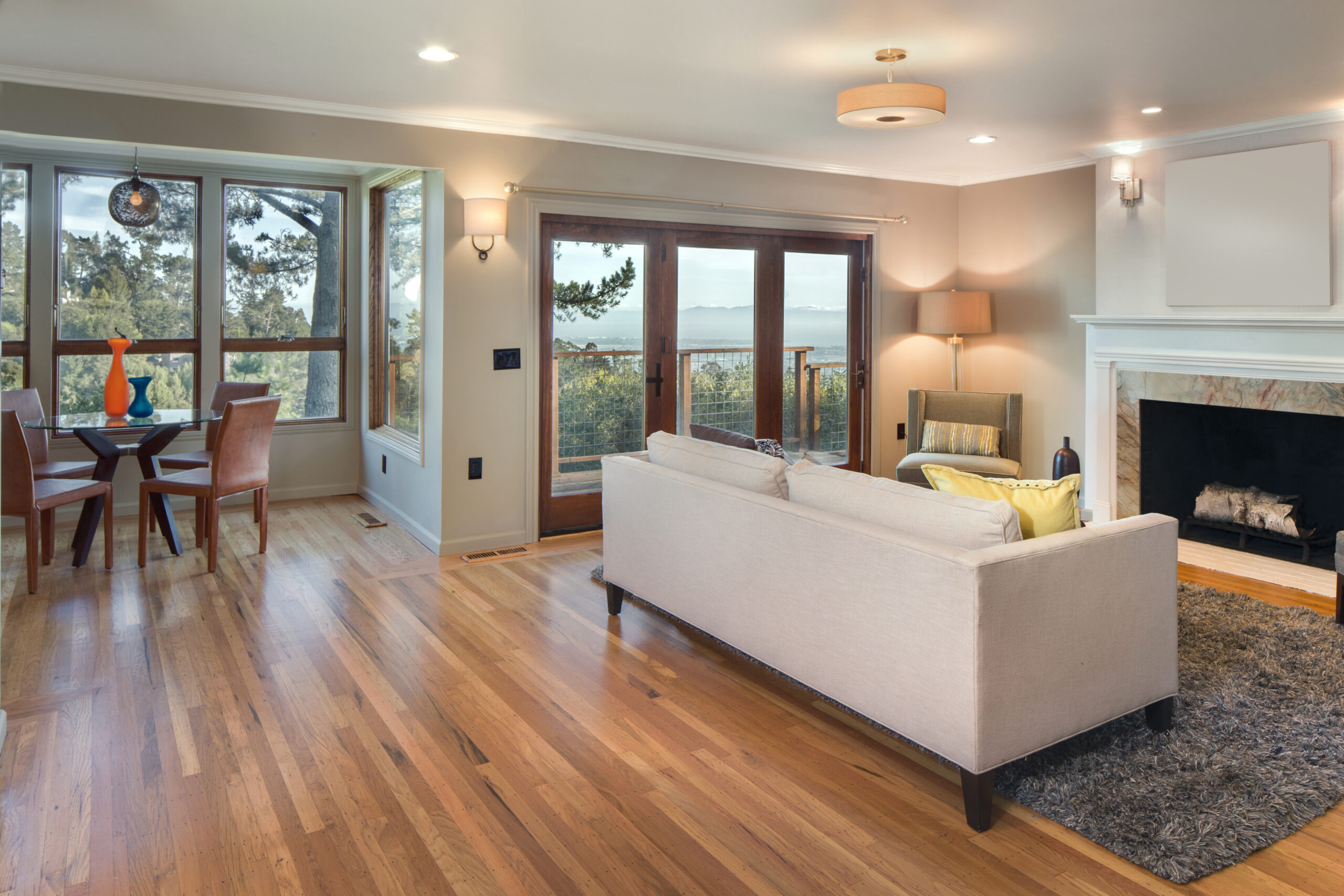The windows and doors in your home are the only things maintaining the airtight seal that keeps our houses cool in the warm months and warm in the cool months. They are the barrier between our safe havens and the outside world. Many windows and doors are low quality and provide poor seals in the crucial areas of your home. As a result, they can account for up to 25% of the heat escaping your home. Increasing the energy efficiency of these essential house structures can reduce that heat loss percentage and save you money.
What Makes Windows Energy Efficient?
Everyone has experienced the discomfort a drafty window can bring. Many aspects of your windows can contribute to their inadequate seal including the frame, the glass, the locking mechanism, and more. Here are some invaluable aspects of windows that will increase the energy efficiency of your home:
- Double/Triple/Quadruple Glazing: While people often hear glazing and think of a treatment for a window, this term actually refers to the number of panes that make up the window. Windows with only one glass pane are standard in many houses but do a poor job of regulating air flow and temperature in your home. All energy efficient windows will have a double glaze at least, meaning two panes. It is not uncommon to see this number raise to four panes; while it will cost a bit extra to get these windows installed, the energy efficiency is unmatched.
- Insulated Frames and Sashes: Many windows frames and sashes are aluminum based, but unfortunately for those homeowners, this window type is the least energy efficient because of how well the material conducts heat. The energy efficiency of your windows can thereby be improved by replacing the frames and sashes with a more insulated material such as vinyl, fiberglass, wood, or clad-wood.
- Low E (Emissivity) Glass: Low E glass is glass that has been coated for the purpose of affecting the way sunlight (and the heat it brings) is filtered through the glass. Low emissivity glass can be used in a couple of ways. The first is the addition of a low E coating to the exterior windowpane; this blocks UV and infrared light from entering the home, which keeps the house cool. The absence of low E glass will trap heat inside the house. All light is allowed to pass through the window, essentially creating a greenhouse effect. For those living in northern climates, this can drastically affect your winter heating costs. The way you incorporate low emissivity glass into your home is therefore dependent on your location. Warmer areas should include low emissivity glass to improve energy efficiency in their home (lower energy demand for cooling), and colder areas should refrain from using low emissivity glass (lower energy demand for heating).
- Windowpane Spacers: Windowpane spacers are made of materials such as plastic, foam, and metal. They improve the seal in your windows to enhance the insulation capability and prevent air leakage. They prevent the movement of air between windowpanes and thereby the transfer of heat that comes with it.
- Inert Gas: The presence of multiple glass panes in a window can drastically increase their energy efficiency. However, the spaces between these panes can result in air leaks between the inner and outer panes; this can result in adverse heat transfer, ultimately affecting the temperature in your house. This is where inert gas comes in; gases like argon and krypton can be used to fill the spaces between windowpanes and eliminate air leaks.
- Tinting: The glass in your windows can be tinted with a clear film in order to block out light. This will further insulate your home and increase the energy efficiency of the windows.
What Makes Doors Energy Efficient?
The doors in your home are another place where energy loss commonly occurs. Inadequate materials and poorly designed windows are often the culprits behind energy-wasting doors. Here are some factors that will improve the energy efficiency of your doors:
- Multiple Glass Panes: For doors that have windows incorporated into them, the same tips apply as for the windows in your home. Multiple glass panes separated by spacers and inert gas will greatly increase the insulation factor of your door. These things prevent heat transfer from occurring and reduce the demand on your furnace/AC unit maintaining the temperature in your home.
- Tight Fit: Gaps between your door and its frame allow air to pass freely between your home’s interior and the outside world. Reducing the space by investing in doors with tighter seals will reduce the amount of air leakage occurring around the door’s edges and improve the energy efficiency of the door. More modern doors take this a step farther by including a magnetic strip along the edges of the door to further enhance the seal that is produced.
- Improved Weatherstripping: Replacing or installing high quality weatherstripping around the edges of your doors will drastically reduce the amount of air that can leak in and out of your home. This will prevent heat loss in the cool months and prevent heat gain in the warm months. In both scenarios, this will improve the energy efficiency of your home and help save you money.
- Core Materials: For the most energy efficient doors, you will want to invest in materials such as fiberglass, vinyl, wood cladding, or steel with a polyurethane foam core. These materials prevent the conduction of heat through the door and maintain the internal temperature of your home more efficiently.
Benefits of Energy Efficient Windows and Doors
There are numerous benefits of increasing the energy efficiency of the windows and doors in your house. Below are three of the most recognizable improvements that will appear as a result of reducing the energy load of your home.
- Save Money: This is often a favorite of homeowners who have decided to invest in energy efficient windows and doors. While the upfront costs are higher than for regular door and window installation, the long term result is lower bill payments all year round. In cold months, your house will retain heat better and so require less energy for maintenance, and in the warm months, your home will prevent the sun’s heat from entering your home, lightening the load on your AC unit keeping your house cool. Energy efficient windows and doors are also higher quality and more durable, so they will need to be replaced less often; another savings for you.
- Reduce Greenhouse Gas Emissions: Conserving energy in your home by improving your doors and windows has a large impact on the environment. Heating and cooling homes draws a lot of power, and as a result, will produce a substantial amount of greenhouse gas emissions. Improving the energy efficiency of your home will reduce its energy demand and therefore also reduce the greenhouse gas emissions produced to sustain your home.
- Increased Comfort: This is the most noticeable of all the benefits stemming from energy efficient windows and doors. Temperature fluctuation in your home is never a good thing; following the tips above will not only improve the overall consistency of the temperature in your home, it will also eliminate those cold spots we are all familiar with. Walking past your front door or bedroom window will no longer leave you with a chill or a wish for slippers.





